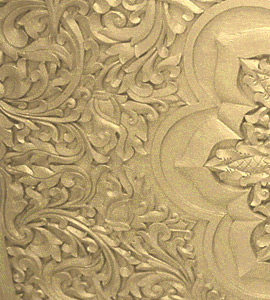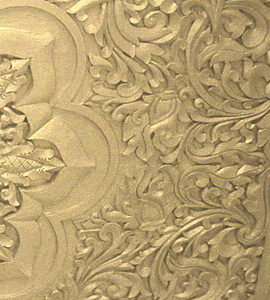


History of Pagodas as a structure of reverence
From the jungles of Java to the snow-covered wastes of Mongolia, from the mountains of Afghanistan to Japan's pacific coastline, these monuments rose, bearing silent witness to the power of the Buddha's teaching. Called a ‘Stupa’ or ‘Pagoda’ - it was originally a mound erected as a memorial to a great leader. It is mentioned in theMahaparinibbana Sutta, the discourse recording the last days of the Buddha, that ten stupas were constructed to honour his remains…
Lenatthanca sukhatthanca, jhayitunca vipassitum.
Viharadanam sanghassa, aggam Buddhena vannitam.
Tasma hi pandito poso, sampassam atthamattano.
Vihare karaye ramme, vasayettha bahussute. -- Culavagga 295
Sheltering and conducive to concentration and insight, a place of meditation is praised by the Buddha as the greatest gift to the Sangha. Therefore a wise man, considering his own welfare, should build pleasant dwellings in which those who have heard much about the Dhamma may stay (and practice it).
The custom of building such memorials seems to date from very ancient times in India. In Sanskrit the term is Chaitya and in Pali it is Cetiya or Thupa. One of these is thought to be still standing at Kushinagar in modern-day Uttar Pradesh, marking the spot where the Buddha's body was cremated.
Traditional accounts credit the Emperor Asoka with building 84,000 stupas all over his realm, each containing a relic taken from the original ten. Archaeological evidence confirms that extensive construction was undertaken in Asoka's time, two hundred years after the Buddha.
The best preserved of the Asokan stupas are at Sanchi in central India, where the relics of the Buddha's chief disciples, Sariputta and Moggallana were found. The boxes contained small fragments of bone in white soapstone caskets, along with precious stones and fragments of sandalwood, perhaps from the funeral pyres. The relics were removed to Britain but were returned to India after it gained independence, and are now again enshrined at Sanchi.
Still more astonishing is the discovery of caskets identified as containing relics of the Buddha himself, made at Peshawar in Pakistan, site of the ancient city of Purushapura and at Piprahva in Uttar Pradesh, where a rare pre-Asokan stupa stands. Some of the relics are enshrined at Saranath, where the Buddha began his teachings and some are enshrined in a temple in Mandalay, Myanmar.
As the Dhamma spread beyond the frontiers of India, the practice of building stupas followed. The largest is the Shwedagon Pagoda in Yangon (Rangoon), Myanmar. Legend has it that this was the first stupa built to honour the Buddha, established to enshrine the hair that he had given as relics to two Burmese merchants who paid respects to him soon after his enlightenment. Although the largest and most highly venerated, Shwedagon is only one of countless stupas in Myanmar, which is sometimes called "the Land of Golden Pagodas." The landscape is dotted with these monuments and every village has its stupa, though sometimes of modest size.

